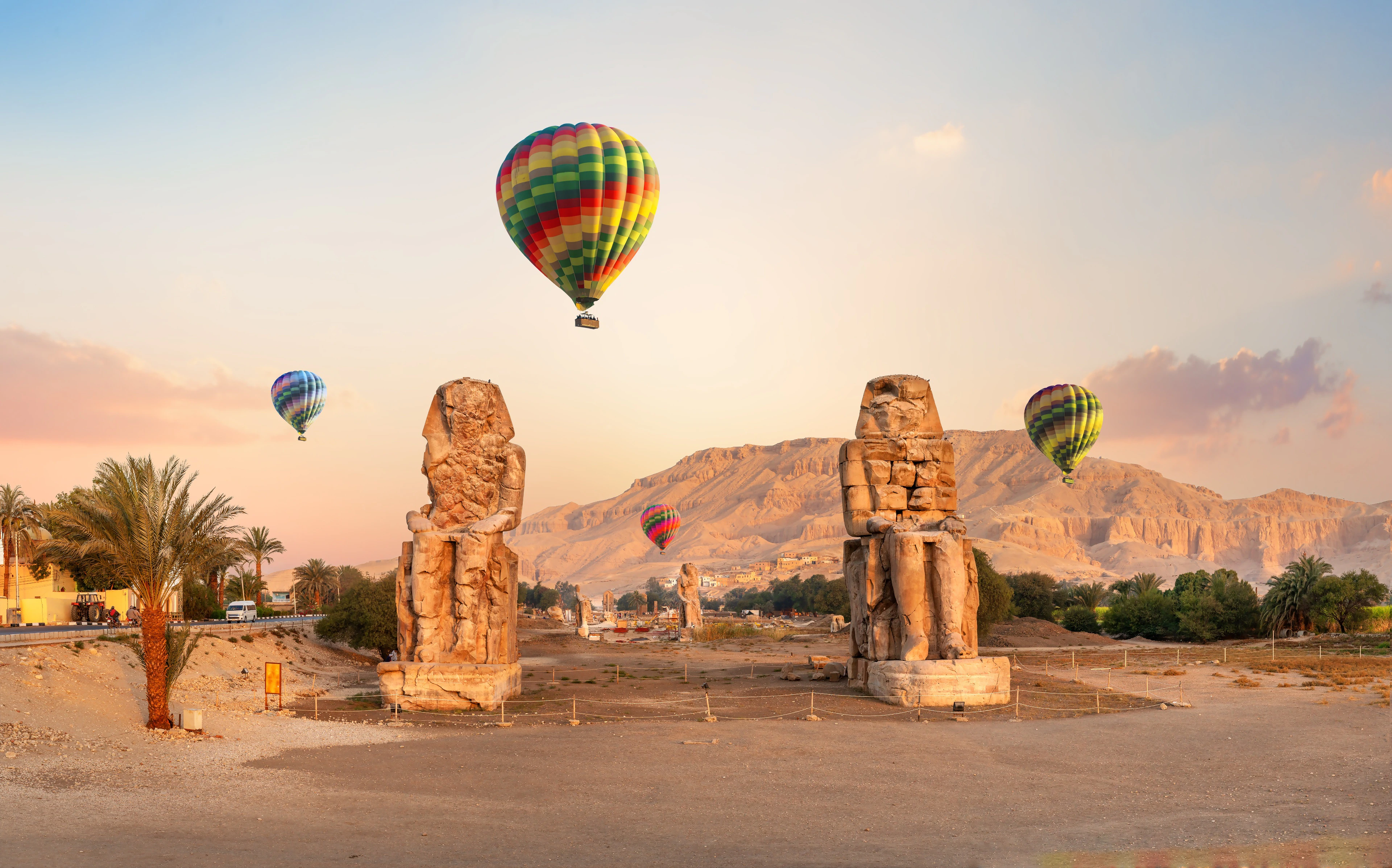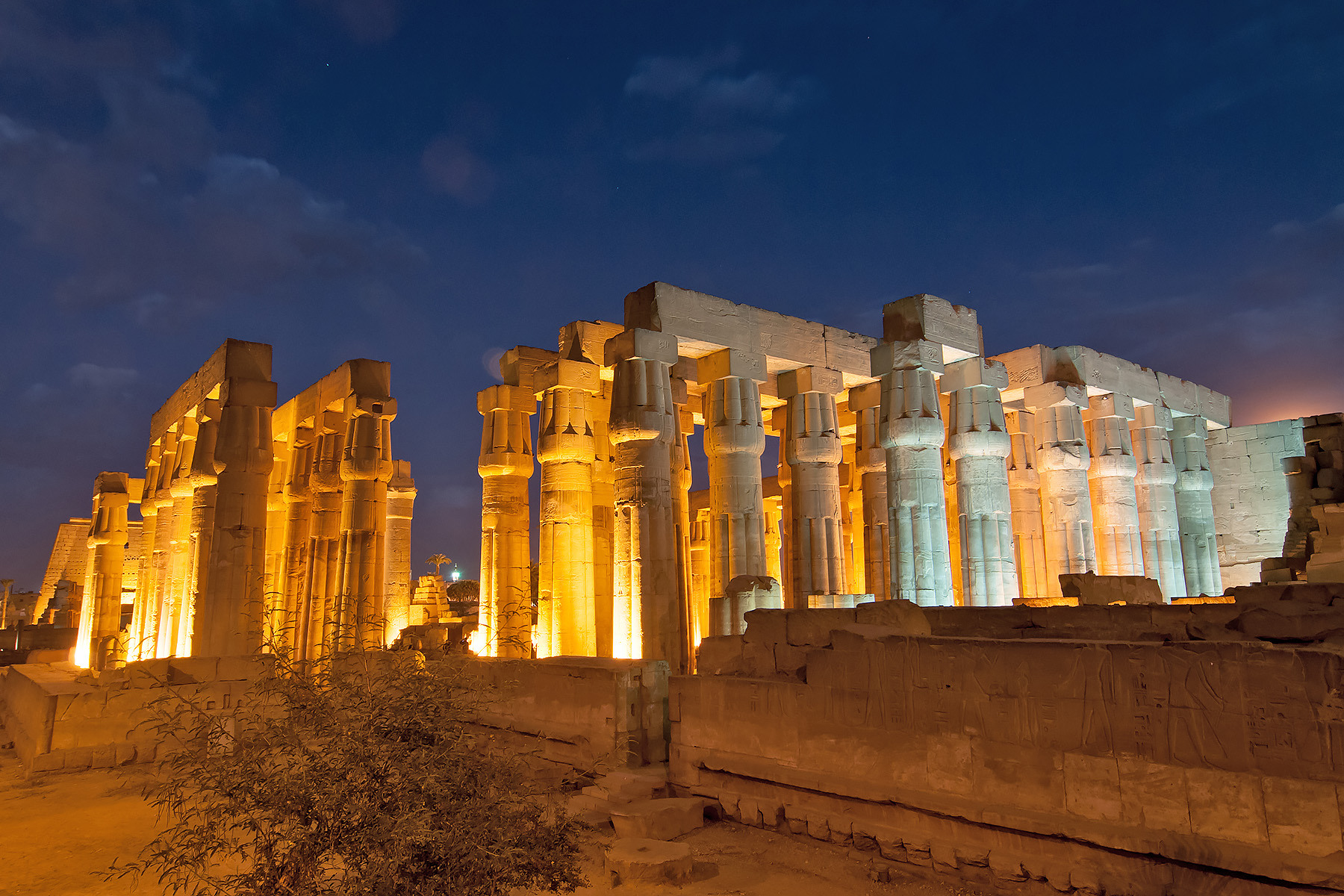



Luxor, often referred to as the world’s greatest open-air museum, is a city steeped in ancient Egyptian history. Located on the banks of the Nile River in southern Egypt, it was once the capital of the ancient Egyptian New Kingdom and the heart of the ancient world’s most powerful civilization. Luxor is home to some of Egypt’s most famous monuments, temples, and tombs, making it a top destination for history enthusiasts and travelers alike.
October – April: The best time to visit Luxor is during the cooler months of fall, winter, and early spring. Temperatures are more moderate, making it perfect for sightseeing and exploring ancient sites.
May – September: Summer months can be extremely hot, with temperatures often exceeding 40°C (104°F). This can be a challenging time to visit unless you are comfortable with the heat and plan to stay indoors during the hottest hours of the day.
By Air (Luxor International Airport):
Luxor has its own international airport (LXR), which is about 6 km from the city center. It receives both domestic and international flights, making it convenient for travelers coming from major Egyptian cities (like Cairo) or international destinations.
By Train:
Luxor is well connected to Cairo and other cities via Egypt’s extensive train system. The train ride from Cairo to Luxor takes about 9-10 hours and offers an affordable way to travel.
By Bus:
Long-distance buses also connect Luxor with Cairo and other major cities. The bus ride from Cairo to Luxor typically takes about 10-12 hours.
By Car:
Renting a car or hiring a driver to take you from Cairo to Luxor is another option, with the journey taking approximately 9 hours.
Karnak Temple:
One of Egypt’s largest and most impressive temple complexes, Karnak Temple is dedicated to the god Amun. It is famous for its hypostyle hall, which contains 134 towering columns, and the Avenue of Sphinxes, which connects the temple to Luxor Temple.
Luxor Temple:
Located in the city center, Luxor Temple is another massive and well-preserved temple complex. It was built by several pharaohs and is known for its giant statues, obelisks, and historical carvings.
Valley of the Kings:
The Valley of the Kings is where many of Egypt’s pharaohs were buried, including Tutankhamun. The valley contains tombs of pharaohs and nobles, many of which are elaborately decorated with scenes from the afterlife.
Valley of the Queens:
This site is home to the tombs of the wives of pharaohs, including the famous tomb of Nefertari, the wife of Ramses II. The tombs are adorned with beautiful frescoes and intricate carvings.
Hatshepsut Temple:
The Temple of Hatshepsut, one of Egypt’s few female pharaohs, is a stunning architectural wonder built into the cliffs of the Theban Mountains. Its terraced design and magnificent statues make it one of Luxor’s most important attractions.
Colossi of Memnon:
These two massive statues stand at the entrance of the site of Amenhotep III’s mortuary temple. The statues are famous for their size and for the mysterious sound they sometimes emit at sunrise (referred to as "singing").
Luxor Museum:
The Luxor Museum houses an impressive collection of ancient Egyptian artifacts, including statues, mummies, and jewelry. It’s a great place to gain insight into the region’s ancient history.
Ramses II Temple at Abydos:
Located about 170 km north of Luxor, this temple is one of the most important in ancient Egypt. It is dedicated to the god Osiris and contains beautiful reliefs and carvings, including the famous Abydos King List.
Dendera Temple:
About 60 km north of Luxor, the Dendera Temple Complex is dedicated to the goddess Hathor. It is one of the best-preserved ancient temples in Egypt and features a well-preserved zodiac ceiling.
Edfu Temple:
Located about 100 km south of Luxor, the Temple of Horus at Edfu is one of Egypt’s most intact temples. It’s dedicated to the falcon god Horus and is known for its monumental pylons and detailed inscriptions.
Kom Ombo Temple:
Situated on the banks of the Nile, Kom Ombo Temple is a dual temple dedicated to Horus and Sobek, the crocodile god. It is famous for its twin sanctuaries and the ancient medical instruments displayed in its museum.
Nile River Cruise:
Take a relaxing cruise along the Nile River, offering picturesque views of the temples and monuments lining the riverbanks. You can book short day cruises or longer cruises between Luxor and Aswan.
Hot Air Balloon Ride:
For a unique perspective of the temples and tombs of Luxor, take a hot air balloon ride at sunrise. The panoramic views of the Valley of the Kings and Karnak Temple are unforgettable.
Camel Ride:
Enjoy a camel ride around the temples and desert. It’s a fun way to explore the desert surroundings while getting a feel for traditional Egyptian travel.
Shopping in Luxor’s Souks:
Visit Luxor’s lively souks (markets) to buy handmade crafts, jewelry, and traditional Egyptian textiles like scarves, shawls, and linens.
Luxury:
Sofitel Winter Palace Luxor: A grand colonial-style hotel located near the Nile River, offering luxurious rooms, a pool, and top-notch service.
Steigenberger Nile Palace Luxor: A luxurious hotel overlooking the Nile, complete with a spa, multiple restaurants, and beautiful views.
Mid-Range:
Pyramisa Isis Hotel & Suites Luxor: A good balance of comfort and affordability with an outdoor pool and proximity to many attractions.
Nile Palace Hotel: Located on the Nile River, this hotel offers spacious rooms and is close to major historical sites.
Budget-Friendly:
Nile View Hotel: A budget option offering a simple but comfortable stay with views of the Nile and close to Luxor Temple.
El Luxor Hotel: An affordable option with basic amenities, located near the city center.
✅ Local Specialties:
Koshari: A popular Egyptian dish made from rice, pasta, lentils, and fried onions topped with tomato sauce.
Foul Medames: A breakfast dish made from fava beans, often served with olive oil, garlic, and lemon.
Mahshi: Vegetables like zucchini and eggplant stuffed with a mixture of rice, herbs, and spices.
Molokhia: A leafy green dish made from jute leaves and served with rice or bread, often accompanied by chicken or rabbit.
🍴 Top Restaurants:
Sofra Restaurant & Café: A traditional Egyptian restaurant offering a variety of local dishes, including grilled meats and mezze.
Al-Sahaby Lane Restaurant: A cozy restaurant overlooking the Nile, known for its delicious Egyptian cuisine and fantastic views.
The Lantern Restaurant: Offers a range of international and local dishes in a charming atmosphere with an outdoor terrace.
Ancient Egyptian Influence:
Luxor’s local culture is deeply rooted in ancient Egyptian traditions. Many of the city's festivals, ceremonies, and customs are inspired by the region’s ancient religious and cultural practices.
Crafts and Arts:
Luxor is famous for its handicrafts, including papyrus, scarab beetles, jewelry, and ceramics, which visitors often buy as souvenirs.
Local Festivals:
The Luxor African Film Festival celebrates cinema from across Africa, showcasing movies with African themes. Moulid festivals, which are religious celebrations honoring saints, are also part of Luxor’s cultural landscape.
✔️ Dress Modestly: Luxor is a conservative city, and while it is a tourist hotspot, it’s important to dress modestly, especially when visiting religious sites. ✔️ Stay Hydrated: Luxor can be very hot, particularly in the summer months, so be sure to carry water and wear sunscreen. ✔️ Hire a Guide: While many of the ancient sites are well-signposted, having a local guide can enhance your experience and provide in-depth historical context. ✔️ Use Local Transport: Taxis and horse-drawn carriages (known as calèches) are popular ways to get around.